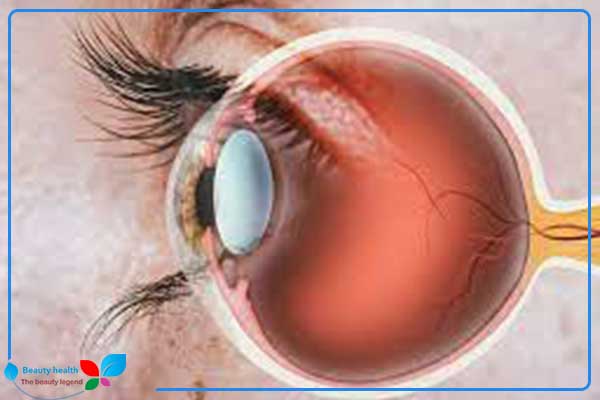Is laser eye surgery dangerous
Is laser eye surgery dangerous - Laser eye operations
Is laser eye surgery dangerous – Laser eye operations | What are the types of LASIK operations or laser vision correction, how is the laser retina surgery performed, what are the success rates of laser eye surgery experiments, and how can the eyes be whitened by laser.
Is laser eye surgery dangerous – Laser eye operations
Is laser eye surgery dangerous – Laser eye operations | What are the types of LASIK operations or laser vision correction, how is the laser retina surgery performed, what are the success rates of laser eye surgery experiments, and how can the eyes be whitened by laser.
What is the success rate of LASIK surgery, what are its risks, how is it performed, and what is the duration of the laser eye surgery? How much does the vision correction surgery cost and what are the best vision correction centers in Turkey.
Eye health is important and necessary because it is the element in which we see the life around us, and with the increase in eye problems, ophthalmology has developed to find modern methods that help treat the eyes from the various problems that affect them, and one of these techniques is LASIK for the eyes.
The Health and Beauty Center in Istanbul is considered one of the best cosmetic centers that perform vision correction operations in Istanbul Turkey using the latest medical technologies and at the best prices:
LASIK operations and vision correction for the eyes Health and Beauty Center Turkey
Eye safety and laser eye operations
Is laser eye surgery dangerous ? we must know that the eyes are complex organs and there are many parts that must work together to produce a clear vision.
What is the eye made of and what are its most important parts?
Cornea:
It is a layer of tissue located at the front of the eye that helps focus light.
Tear ducts:
- The openings leading to the tear ducts are located in the upper and lower eyelids at the inner corner of each eye.
- The lacrimal gland secretes tears from the upper outer eyelid to the surface of the eye, and tears keep the cornea lubricated and free of impurities.
- Where the tear ducts keep tears away.
iris:
- The colored part of the eye, the iris, is a group of muscles that control the pupil, the opening in the middle of the eye.
- The iris also controls the amount of light that enters through the eye.
The lens and retina:
- The lens focuses the light on the retina, and the light-sensitive cells are located at the back of the eyeball.
- The retina also converts images into electrical signals that are sent to the optic nerve.
Optic nerve:
- It is a thick bundle of nerve fibers attached to the back of the eye.
- The optic nerve also transmits visual information from the retina to the brain.

refractive errors – Is laser eye surgery dangerous
When light is not focused properly, it causes blurry vision. Eyeglasses, contact lenses, surgery or laser eye operations usually correct refractive errors, which include:
Myopia: When distant objects appear blurry.
Farsightedness: When nearby objects appear blurry.
Astigmatism: This can lead to blurry vision because the cornea is not ideally designed to direct light.
Presbyopia: It is farsightedness caused by the loss of elasticity of the lens of the eye due to aging.
Glaucoma: It is an increase in fluid pressure inside the eye, and this can also cause damage to the optic nerve.
Glaucoma is a common cause of blindness, and age, race, and family history are important risk factors.
Cataracts: It is a clouding of the lens, causing blurry vision. People with cataracts often report “halos” around the things they look at, especially at night.
This condition is more common in the elderly and the cataract can be removed by surgery that replaces the damaged lens with an artificial lens.
Age-related macular degeneration:
It is a locus atrophy that occurs as a result of gradual damage to the cells of the macula.
This condition is also more common in people over the age of 60.
This condition causes blurry vision in the center of the field of vision and is the most common cause of blindness and vision loss for people over the age of 65.
Amblyopia:
It is called lazy eye, as it occurs when vision does not develop properly in the eye.
Where the brain begins to prefer the eye that offers better vision, as this happens if one of the eyes is prevented from producing a clear image during the critical years from birth until the age of six.

Laser eye operations
If you are tired of wearing glasses or contact lenses, you will resort to laser eye surgery, which is a type of refractive eye surgery. There are many types of refractive surgery (laser eye surgery operations), including:
- Myopia: It is a condition in which you see near things clearly, but things that are far away are blurry.
- When the eyeball is a little longer than usual or when the cornea is curved too sharply.
- Light rays are focused in front of the retina and lead to blurring of distant vision, and you can see near things more clearly, but you cannot see far things.
- Farsightedness (Hyperopia): A condition in which you can see near things blurry, when you have an eyeball that is shorter than average or the cornea is very flat.
- As the light is focused behind the retina instead of on it, this leads to blurring of near vision and sometimes far vision.
- Astigmatism generally causes blurry vision: When the cornea curves or flattens unevenly, the result is astigmatism.
- This disrupts the focus of near and far vision. Traditionally, blurry vision is corrected by bending light rays with glasses or contact lenses.
- But reshaping the cornea will also provide the necessary refraction and vision correction.
- Before the laser procedure, the ophthalmologist will evaluate the detailed measurements of your eye and then use a special type of CT laser to precisely change the curvature of the cornea.
What is the success rate of laser eye operations?
The success rates of laser eye operations are very high, but in order to obtain the desired results after laser eye operations and to ensure the success of the operation accurately, it is necessary to conduct a prior compatibility examination.
What are the side effects of laser eye operations?
Side effects of laser eye operations include:
- Excessive sensitivity of the eye to light on the first day after the operation.
- The constant desire to rub the eyes in the first days after the operation.
- The appearance of redness in the eyes and often disappears without treatment within two weeks of the operation.
- Feeling of dry eyes during the first weeks of the operation.
What is the duration of laser eye operations?
The laser operation is one of the eye surgeries that aims to correct errors and visual defects, namely: myopia of all kinds, farsightedness of all kinds, and deviation. The principle of the operation is to change the shape of the cornea and return it to its normal position without the need for any stitches. This process lasts from ten to fifteen minutes per eye.

What are the risks and downsides that occur after laser eye operations?
The disadvantages that occur after laser eye operations include:
- Seeing halos around lights at night during the first months after the operation.
- Variation in how well the human eye responds.
- The need to use small-strength glasses to get better visual acuity.
- The quality of the visual sensation decreases in the first months after the operation, but it returns to the way it was.
- Some folds may occur in the corneal cortex if the patient rubs his eyes hard in the first days after the operation.
- Infection with a microbial infection of the cornea after the laser operation, and this can be prevented by sterilizing the operation room well.
- Permanent changes in the cornea, such as irregularities in the surface of the cornea, which lead to the difficulty of wearing contact lenses.
- Corneal injury and roughness.
- A decrease in contrast sensitivity occurs.
- Deterioration of vision or permanent blindness.
Laser eye operations Health and beauty center
The most important cosmetic surgeries:
Plastic surgery is one of the most important operations in our time, and Turkey is characterized as one of the cheapest countries in the world to perform plastic surgery . Among the most important cosmetic operations in Turkey :
- Rhinoplasty .
- Body sculpting .
- Hollywood smile .
- hair transplant
